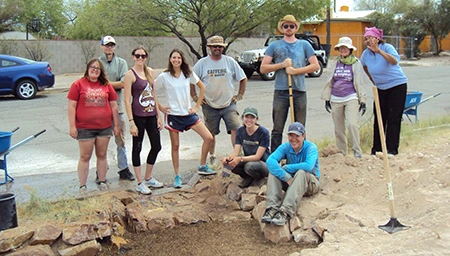Public Policy Review

Regular readers of this column know I have often discussed the daunting challenge of meeting the water needs of our growing population. Meeting the water needs of the environment is equally challenging. Mostly silent on the issue of water for the environment, Arizona’s Groundwater Management Act and related water law offer little help in confronting the challenge. Yet maintaining healthy ecosystems is important to Arizona’s economy and our quality of life.
Several years ago, I began to characterize environmental restoration in Arizona. U.S. Army Corps of Engineers funding enabled me to study ecosystem restoration in the state’s two major urban areas, Phoenix and Tucson. U.S. Bureau of Reclamation funding then enabled me to broaden the study to include a total of 30 environmental enhancement projects in Arizona. Completed in 2006, the report, “Projects to Enhance Arizona’s Environment: An Examination of Their Functions, Water Requirements and Public Benefits,” showed that over 60 percent of the projects required supplemental water for revegetation or open water elements.
For some projects, the cost of water was substantial. For 40 percent of these projects, at least one water source was not firm; in other words, no signed contract guaranteed the delivery of a future water supply. The findings highlighted the importance, and in some cases the tenuous security, of water for environmental enhancement projects in Arizona.
Concerned with the problem of increased scarcity of water for both human and non-human needs, my former graduate student, Andrew Schwarz, and I obtained additional Reclamation funding to explore ways that voluntary water conservation by municipal water customers could translate into water for the environment. Our basic premise was if customers knew water they saved could be put to environmental use, they would have an additional inducement to conserve water. In other words, they would be getting added satisfaction from their water-conserving achievements.
To work out the feasibility of such a program, we needed the assistance of experts. Tucson Water staff agreed to work with us on conceptual elements. In addition, we solicited input and feedback from many stakeholders. We originally called the program “Water Conservation Banking” to reflect our original premise of conserved water set aside to meet environmental water needs. We envisioned a “bank” in which water would be deposited based on measured conservation and then withdrawn to use for environmental purposes.
We quickly discovered our concept was fraught with complexities. Early on, stakeholders pointed out that such a program would work only if conservation behavior could translate into dollars that, in turn, could be used to purchase water for the environment. Instead of creating a pool of water, our goal then became converting conserved water into a money account, with the funds used to purchase water for environmental use. The environment would thereby become a water customer.
We considered a number of factors. First and foremost was determining how customers could participate in the program. The program depends on customers volunteering to pay for water they conserved. To determine the amount conserved, baseline water use would need to be established for each participant. We considered alternative baselines, concluding that each customer’s historical water use was the most appropriate baseline. Considering whether utility billing systems could accommodate such a program, we found that structural and technological variables created large differences in the ability to implement the program. We also preliminarily explored the mechanism for the allocation of funds. Stakeholders indicated that the mechanism for fund disbursement to projects would likely depend on program design and size. The details of our findings are included in our report to Reclamation, “Water Conservation Banking: Municipal Water Conservation to Support Environmental Enhancement,” submitted December 2007 and available on the WRRC web site.
We believe we have come up with a novel concept for a “Conserve to Enhance” program. There are two key elements to it. The first is to provide an additional or different incentive for water conservation. The second is to provide funds to purchase water for the environment. The latter can be separated from the former, with an option available to either consider implementing a full-scale conservation program, as described in our report, or a simple check-off type program, with water customers designating they agree to contribute money over and above their water bills to fund environmental enhancement.
Similar to “Green Watts” programs familiar to electricity customers, this type of check-off program would not require establishing a baseline and would not be connected to conservation behavior. Water utilities could implement the program with relative ease, and it would indicate the breadth and depth of interest in securing water for environmental enhancement projects. To implement, criteria would have to be established for contributions, such as a maximum and minimum, and for a mechanism for expenditure of funds, including targeted or eligible projects. This simpler strategy, however, with participation in the program not connected to measured water conservation, would not accomplish our main objective of providing an additional inducement to conserve water.
Growth stresses the environment. Projects to preserve, restore and enhance the environment abound, with many requiring water. Andrew, who now works as Engineer and Water Resources Planner for the California Department of Water Resources, and I believe the merits of a voluntary Conserve to Enhance program warrant additional investigation. We would like to work with individuals and utilities to pilot such a program. We welcome your indication of interest and suggestions.

